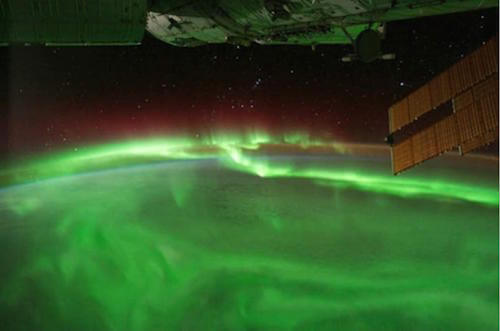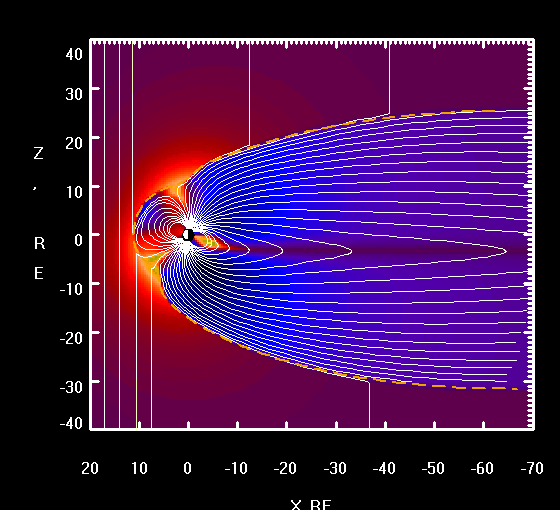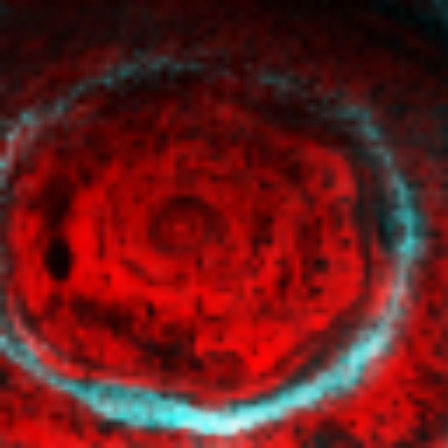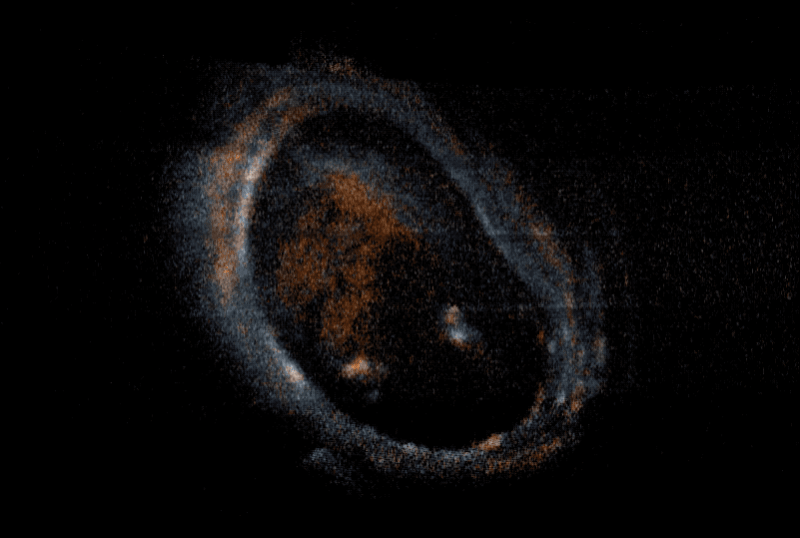Super Cool Science S#!t #12 - Glowing Planets
Electrons are so full of energy, they just want to party,
and they can create beautiful lightshows in the atmosphere of planets to do it. These dancing lights in the sky come from the smallest of collisions, but produce one of the greatest wonders our planet has to offer.

Image Credit: NASA
The Auroras
Auroras occur over the magnetic poles. On Earth, they're called the Aurora borealis at the north pole, and the Aurora australis at the south pole. They reside anywhere from 50 to upwards of 400 miles above the surface of the planet, and form giant ovals of dancing lights which spread out from the poles, growing with the intensity of the solar wind. During big solar storms, the Aurora Borealis can be seen as far south as the United States and Europe.
Mid-Air Collisions
When charged electrons are carried on the solar wind and collide with our magnetosphere, those electrons collide with particles in the air, ionizing them and creating the shimmering curtains we can see in the sky.

Credit: NASA
The Earth's magnetic field grabs and carries electrons as they fly in from the Sun. The magnetic field is weakest when it "falls in" at the poles, and this is where the magic happens.
When these highly charged particles smash into oxygen in our atmosphere, it will emit a green or orange to red light as it gives off the energy it absorbs from the collision.
Nitrogen emits a blue light when it gains an electron from the electrons, and red light as it returns to a grounded state from being excited.
Extraterrestrial Auroras

Credit: NASA
Earth's auroras aren't special, even in our own solar system. Many of the planets, and some of their moons, orbiting the Sun exhibit auroras in some form or another. The image above is a visible light and infrared composite of Saturn's north pole, taken by Cassini. The red coloration shows the heat given off by Saturn's hexagonal storm, and the blue ring is an aurora. As explained above, the blue light of the Aurora comes from nitrogen gaining electrons from the solar wind.

Jupiter's "Northern Lights". Credit: NASA
All of the gas giants in our solar system have auroras, mostly caused by solar wind like Earth's. Jupiter, however, has auroras that are caused by some of its moons, especially Io. Io has its own magnetic field and an ionosphere, and when ionized particles from Io's atmosphere interact with the magnetic field of Jupiter, it can cause the same bright effects. Using the Hubble Space Telescope, scientists have witnessed auroras taking place on Jupiter's moons Io, Europa, and Ganymede.
Even planets like Venus and Mars, which don't have full magnetic fields, can exhibit auroras under the right circumstances.
Big things come in tiny packages, and electrons certainly hold to that standard. The way they can light up a planet sparks curiosity and awe into those who appreciate the "little things".
Thank you for reading this installment of Super Cool Science S#!t! If you enjoyed this article, and found it enlightening, consider resteeming it so your followers might enjoy it too. If you really liked it, you know what to do 😉
References
- https://www.northernlightscentre.ca/northernlights.html
- http://www.swpc.noaa.gov/phenomena/aurora
- https://amp.space.com/38059-juno-finds-mysteries-in-jupiters-auroras.html

Didn’t know auroras are routine on other planets. Cool info!
I've never actually seen the northern lights, but every time I hear or see something about it it reminds me of the Glen Campbell song, "Northern Lights"
Cheers!!
That hexagonal occurrence on Saturn is one of the coolest things I think I've ever seen. Nice post too!
read about the auroras sometime ago and i discovered that some auroras are rear such as the red aurora
and also there some locations that are best to get a clear view of an aurora, places like norway
Simple and informative blog . Nice Upvote and follow . Resteem that .